Have you ever felt that flicker of rage when a chatbot, designed to help you, responds with the digital equivalent of a condescending pat on the head? That moment your simple question is met with a robotic, unhelpful answer, making you feel less like a valued customer and more like an inconvenience? It’s a uniquely modern frustration, being stonewalled by a machine that seems to have been programmed by a digital drill sergeant. The line between a helpful AI and an infuriating one is thinner than you think, and most companies are stumbling right over it.
This isn’t a minor glitch in the system. It’s a fundamental failure in design philosophy. As we weave artificial intelligence into the very fabric of our lives, the tone it takes is no longer a trivial detail—it’s the crucial component determining user trust, brand identity, and the very success of the technology.
This isn’t about programming your AI to be overly sentimental or saccharine; it’s about engineering a voice that is clear, honest, and reliable. It’s about getting the communication exactly right. Consider this article your architectural blueprint for building AI personas that connect, not condescend. We’re going to move beyond the superficial and give you the framework to construct digital voices that are truly effective and, dare I say, revolutionary. We will dissect the ‘why,’ the ‘how,’ and the ‘what’ of crafting AI with a respectful tone that will resonate with your users and redefine their experience.
Why a Respectful Tone is Non-Negotiable for AI Personas

For years, companies have treated the “personality” of their AI as a gimmick, a bit of chrome polished onto a chassis of code. They get a team to brainstorm whether the chatbot should be “quirky” or “professional,” write a few canned lines, and call it a day. This is fundamentally wrong. It’s like designing a revolutionary car and then giving it a steering wheel made of wet cardboard. The interface through which a user interacts with your technology is not a feature; it is the entire experience. And for an AI, that interface is its voice, its personality, its tone.
A respectful tone isn’t about being servile or flowery. It is a critical component of functionality based on a simple, timeless principle: trust. When a user interacts with your AI, they are in a vulnerable position. They have a problem they need solved, a question they need answered. A condescending, rigid, or confusing tone immediately signals that the AI—and by extension, your company—does not value their time or their intelligence. This erodes trust in milliseconds.
A respectful tone, one that is clear, patient, and validating, does the opposite. It fosters a psychological environment of safety. It tells the user, “I understand your request, I am capable of handling it, and I am here to assist you.” This foundation of trust is the bedrock of user experience (UX) and the first step toward building a loyal user base. Note, the respectful can be a combination of some of the other tones we have talked about in previous posts, such as the empathetic and authoritative tones.
From that trust, you get engagement. Think about it: would you willingly have a conversation with a person who is constantly dismissive or unhelpful? Of course not. You’d avoid them. Users do the same with digital tools. An AI with a poor tone gets used only when absolutely necessary, often as a last resort. But an AI that communicates respectfully becomes a go-to resource, a genuine asset.
This increased engagement isn’t just a vanity metric; it means more opportunities to help, more data to learn from (ethically, of course), and a stickier product. Users will choose your platform over a competitor’s simply because the experience is better. The conversational AI feels less like a tool and more like a partner.
Then there’s the elephant in the room: AI bias. An AI is a reflection of the data it’s trained on. If that data is sourced from corners of the internet filled with dismissive language, unconscious bias, or outright toxicity, your AI will absorb it. A disrespectful tone is often the first symptom of a deeper, more sinister problem of a biased system. Actively engineering a respectful persona forces you to confront this. It requires you to curate your data, to set explicit rules for interaction, and to build a system based on principles of fairness and equity. This isn’t just good AI ethics; it’s a profound risk mitigation strategy.
Finally, let’s talk business, because that’s what this is all about. The bottom line is that a disrespectful AI is a liability. It creates frustrating user experiences that lead to negative reviews, public complaints, and customer churn.1 It actively damages your brand reputation with every poor interaction.2 Conversely, an AI with a well-crafted, respectful tone is a massive asset. It boosts customer satisfaction, improves first-contact resolution rates, and builds brand loyalty. It turns a simple customer service touchpoint into a positive brand-building moment. In the digital economy, your brand’s voice is one of its most valuable assets. Letting it be defined by a poorly designed, disrespectful AI is an unforced error you can’t afford to make.
The Spectrum of Respect: Defining Your AI’s Persona & Voice

One of the biggest mistakes I see is the assumption that “respectful” means “boring.” Designers, in a misguided attempt to be safe, will strip an AI of all personality, leaving a dry, robotic husk. This isn’t respect; it’s disengagement. Respect is not a single color; it’s a spectrum. The key is to find the right hue that matches your brand, your audience, and the user’s goal. It’s a problem of precision, not just politeness.
In my experience, the most elegant solutions were never the ones that treated the user like a fragile egg, but the ones that adapted to the user’s context with stunning accuracy. Your AI’s brand voice should be no different.
Let’s break down the spectrum with some practical examples of the respectful tone in AI personas.
1. The Direct & Efficient Tone: The Surgeon
This tone values the user’s time above all else. It’s clean, concise, and professional. It gets straight to the point without unnecessary pleasantries but is never rude. It shows respect by providing a fast, accurate solution.
- Best for: Technical support, developer tools, API documentation bots, internal IT helpdesks.
- Bad Example: “Greetings, valued user! I am sorry you are experiencing difficulties. Could you please elaborate on the issue you are facing today?”
- Good Example: “Authentication failed. The API key is invalid. To generate a new key, navigate to Dashboard > Settings > API Keys. Would you like a direct link?”
The first example is full of fluff that a developer trying to fix a critical bug doesn’t have time for. The second is respectful because it’s immediate, diagnostic, and offers the solution in the same breath. It treats the user like a professional peer.
2. The Empathetic & Caring Tone: The Counselor
This tone prioritizes emotional validation and reassurance. It uses softer language, acknowledges user feelings, and guides them gently. It shows respect by creating a sense of safety and understanding.
- Best for: Healthcare apps, mental wellness platforms, customer service for sensitive issues (e.g., a lost package, a billing error), non-profit organizations.
- Bad Example: “Your query about side effects is noted. Refer to the user manual section 7.4.”
- Good Example: “It sounds like you’re concerned about a new side effect, and it’s completely understandable to want more information. Let’s go through the common side effects together. Can you tell me what you’re experiencing? If at any point you feel this is an emergency, you should contact your doctor immediately.”
The bad example is dismissive and cold, which is terrifying in a healthcare context. The good example acknowledges the user’s emotional state, offers a clear path forward, and includes a responsible safety disclaimer.
3. The Humorous & Witty Tone: The Entertainer
This is the most difficult tone to get right, but it can be incredibly effective for building a memorable brand. The humor must be inclusive, clever, and never at the user’s expense. It shows respect by treating the user as an equal who is in on the joke.
- Best for: Marketing campaigns, entertainment brands, e-commerce for non-essential goods, social media bots.
- Bad Example: “Wrong password, genius. Try again.”
- Good Example: “Access denied. That password is more secret than my Browse history. Want to give it another shot or should we just reset it?”
The first is just insulting. The second is self-deprecating, relatable, and keeps the mood light while still being perfectly clear about the problem and solution. It uses humor to defuse the frustration of a failed login.
4. The Professional & Authoritative Tone: The Advisor
This tone projects competence, reliability, and seriousness. It uses formal language, cites sources, and maintains a sense of gravitas. It shows respect by providing information that the user can implicitly trust.
- Best for: Financial services, legal tech, insurance, high-value B2B transactions.
- Bad Example: “Hey! Looks like you want to rebalance your portfolio. Let’s do it!”
- Good Example: “You have requested to rebalance your investment portfolio. Based on your ‘Aggressive Growth’ risk profile, this action will trigger the sale of 15% of your bond holdings and the purchase of tech-sector equities. Please review the transaction details and confirm.”
The casual tone of the first example is deeply unsettling when dealing with someone’s life savings. The second is respectful because its formality and detail convey the seriousness of the transaction, building confidence in the platform’s reliability.
Choosing the right point on this spectrum is an act of design. It requires a deep understanding of your customer and a clear vision for your brand. Your chatbot personality isn’t an afterthought; it’s a core product decision.
Your Questions Answered

When you’re deep in the architecture of a system, it’s easy to forget what the people outside the building are asking. But these common questions are a direct line into the user’s mind. Ignoring them is a form of design arrogance. Let’s tackle some of the most frequent queries about AI personas head-on.
1. How do you create an AI persona?
You don’t just “create” a persona; you architect it. It’s a systematic process.
- Step 1: Define the Core Function. What is the AI’s primary job? Is it a salesperson? A support agent? A teacher? A financial advisor? Its purpose is the foundation of its personality. A salesperson might be enthusiastic, while a financial advisor must be sober.
- Step 2: Establish Core Values. Just like a brand, the AI needs values. Is it built on Integrity, Speed, Empathy, or Innovation? Choose three at most. For instance, an AI for Silphium Design would embody Integrity, Technical Competence, and Reliability. These values become the guardrails for every single interaction.
- Step 3: Define the Tone Spectrum. Using the models we just discussed—Surgeon, Counselor, Entertainer, Advisor—decide where your AI lives. Document it. “Our AI is 70% Advisor, 20% Surgeon, and 10% Entertainer (using only data-related humor).”
- Step 4: Script Key Scenarios. Don’t just let the machine run wild. Write out ideal conversations for the most common use cases: the greeting, handling a frustrated user, admitting a mistake (“I don’t know the answer to that”), and completing a successful transaction. This scripting becomes the gold standard for fine-tuning the model.
2. How do I make my AI sound more human?
The goal isn’t to make it “sound human” in a way that tricks the user—that’s dishonest and creepy. The goal is to make it sound natural. The uncanny valley is littered with the corpses of AI that tried too hard.
- Use Natural Language, Not Jargon: Instead of “System processing your request,” try “Okay, I’m looking that up for you now.”
- Acknowledge and Validate: If a user says, “I’m really frustrated, this is the third time I’ve tried this,” don’t ignore their emotion. A simple, “I can see why you’d be frustrated. Let’s get this sorted out for you,” works wonders. It’s a basic tenet of human-computer interaction.
- Embrace Imperfection (Slightly): Using contractions (it’s, you’re, don’t) is an obvious one. But also consider conversational “fillers” that mimic thought. For example, instead of a long pause and a perfect answer, the AI could say, “Let me check on that… Okay, it looks like your order shipped this morning.” It makes the interaction feel less robotic and more collaborative.
3. What is the tone of an AI?
The tone of an AI is the implied attitude it takes toward the user and the subject matter. It’s not about what it says, but how it says it. This attitude is conveyed through a combination of:
- Word Choice (Diction): Is it “buy” or “purchase”? “Fix” or “resolve”? “Oops” or “Error”?
- Sentence Structure (Syntax): Does it use short, direct sentences or long, complex ones? Does it ask questions or make declarations?
- Punctuation and Formatting: The difference between “Your order is confirmed.” and “Your order is confirmed!” is significant. The use of bolding, italics, or even emojis (if brand-appropriate) dramatically alters the feel.
The tone is the sum of these parts, and it must be managed with intention.
4. How do you describe a brand persona?
A brand persona is the humanization of a company’s values, mission, and voice.3 If your brand were a person, who would it be? What would they be like at a dinner party? The process is very similar to architecting an AI persona. You define its character traits (e.g., Innovative, Trustworthy, Playful), its communication style (e.g., Speaks with quiet confidence), and even its “anti-persona” (e.g., What it is not: Arrogant, Impulsive, Vague).
Crucially, the AI persona must be a direct, authentic extension of the overall brand persona. If your brand is known for its serious, trustworthy reputation in finance, a wise-cracking, emoji-using chatbot would create a jarring cognitive dissonance that damages the brand’s integrity. Consistency is everything.
The Nuts and Bolts of Implementing a Respectful Tone

So far, we’ve talked about philosophy and design. Now, let’s get our hands dirty and look at the code and the data. A brilliant persona is useless if the underlying technology can’t execute it. Building a AI that has a respectful tone requires a sophisticated technical toolkit and a commitment to using it correctly.
1. Natural Language Processing (NLP) and Understanding (NLU)
At its core, this is the technology that allows a machine to comprehend and interpret human language. But it’s more than just recognizing keywords. Modern Natural Language Understanding (NLU), a subset of NLP, focuses on intent and entities.4
- Intent Recognition: The AI must understand that “My bill is wrong,” “You overcharged me,” and “Why is this so expensive?” all share the same basic intent: a billing dispute. Recognizing this allows the AI to trigger the correct, empathetic workflow instead of giving three different, literal answers.
- Entity Extraction: It identifies key pieces of information, like dates, order numbers, or product names.5 This allows the AI to feel intelligent. For example, in “I want to return the blue sweater I bought last Tuesday,” the NLU extracts “return” (intent), “blue sweater” (entity), and “last Tuesday” (entity), allowing for a hyper-relevant response.
A respectful AI leverages NLU to listen, not just hear. It understands the underlying meaning, which prevents the classic, frustrating loop of “I’m sorry, I don’t understand the question.”
2. Sentiment Analysis
This is the AI’s empathy engine. Sentiment analysis models are trained to classify text as positive, negative, or neutral.6 A robust system can even detect more nuanced emotions like frustration, urgency, or satisfaction.7
- How it’s used: When a user’s message comes in, it’s first run through the sentiment analysis model. If the sentiment is flagged as negative or frustrated, the AI can dynamically adjust its tone.8
- Example:
- User (Neutral Sentiment): “Where is my package?”
- AI Response: “Your package is currently out for delivery and is expected today by 8 PM.”
- User (Negative Sentiment): “I’ve been waiting all day, where the heck is my package?!”
- AI Response (Dynamic Adjustment): “I can see this is frustrating. I’ve checked the latest tracking scan, and it shows your package is out for delivery. I know you’ve been waiting, so I’ve flagged your delivery for priority status. I’m very sorry for the delay.”
This isn’t just a canned “I understand you’re frustrated.” It’s a dynamic shift in tone and action based on the user’s emotional state, made possible by sentiment analysis.
3. The Sanctity of Training Data
An AI is what it eats. This is the most critical, and most often botched, part of the process. You cannot build an AI having a respectful tone on a diet of internet comment sections.
- Curated Datasets: Your training data must be meticulously curated. This often means creating it from scratch, using transcripts of ideal conversations handled by your best human agents. It’s expensive and time-consuming, and it’s the only way to do it right.
- Bias Detection and Mitigation: You must actively audit your datasets for biases related to gender, race, dialect, and more. Tools exist to scan for and flag problematic language, but it also requires human oversight.9 If your data is biased, your AI will be biased. Its “respect” will be conditional, which is not respect at all. Sourcing data ethically is a cornerstone of building a reliable system.
4. Prompt Engineering and Continuous Fine-Tuning
With the rise of Generative AI and large language models (LLMs) from places like OpenAI or Google, prompt engineering has become an art form.10 The “prompt” is the master instruction given to the AI that governs all of its responses.
- The Master Prompt: A well-engineered prompt is like a constitution for the AI. It will explicitly state: “You are a helpful assistant for your business. Your tone is direct, technically competent, and reliable. You never use slang. You are to be helpful and patient, even if the user is frustrated. You must not express personal opinions or engage in debates.”
- Fine-Tuning: After the initial training, you must constantly refine the AI’s performance. This involves reviewing conversations (with user privacy in mind), identifying where the tone went wrong, and using that data to “tune” the model. You correct it, showing it the better response, and over time, it learns. Hosting & Maintenance of an AI is not a one-and-done job; it’s a continuous process of education.
This technical stack—NLU, sentiment analysis, pristine data, and expert-level prompt engineering—is the engine that brings a respectful persona to life.
A Mini-Case Study in the Respectful Tone
Let’s make this tangible. Let’s say a hypothetical client came to us. Let’s call them “Wellspring Health,” a startup launching an app to help users manage chronic medication schedules. The stakes couldn’t be higher. This wasn’t selling shoes; it was about people’s health.
The Challenge: Wellspring needed an in-app AI assistant. Its job was to remind users to take their medication, answer questions about dosage, and track their adherence. A single bad interaction—a confusing instruction, a dismissive tone, a missed reminder—could have serious consequences. The AI had to be flawless in its reliability and deeply, profoundly respectful.
The Architectural Process:
-
Persona Definition Workshop: For this we would not start with code; we would start with questions. We would gather their doctors, marketers, and potential users. Ultimately, it was determined the persona needed to be a “Counselor” with a strong dose of “Advisor.” We named it “Kai.”
- Core Values: Reliability, Clarity, Empathy.
- Tone Profile: 60% Empathetic & Caring, 30% Professional & Authoritative, 10% Direct & Efficient. Zero humor.
- Anti-Persona: Kai is never casual, never dismissive, never ambiguous, and never offers a medical diagnosis.
- Technical Implementation
- NLU & Intent: We trained Kai’s NLU to understand the nuances between “Did I take my pill today?” and “What happens if I miss a pill?”—two very different intents requiring different levels of urgency.
- Sentiment Analysis: We implemented a sentiment model to detect anxiety or confusion. If a user says, “I’m feeling really weird after my dose,” Kai’s tone immediately shifts to one of heightened concern and directs them to contact their pharmacist or doctor.
- Data Curation: We built the training dataset from scratch, using anonymized, approved medical scripts and conversations scripted by medical professionals. The dataset was rigorously audited for any language that could be perceived as judgmental or alarming.
-
Scripting Critical Paths: We meticulously scripted the most sensitive interactions. For a missed medication, Kai wouldn’t just say, “You missed a dose.” It would say, “Good morning. I’m not showing a record of your 8 AM medication. I know life gets busy. The guidance for this medication is to take it as soon as you remember, but not if it’s close to your next scheduled dose. Would you like to review the specific instructions from your pharmacist?”
The Projected Result: The result is an AI that builds trust. Users feel supported, not nagged. Medication adherence rates increase because the experience is positive and frictionless. Wellspring Health’s brand becomes synonymous with care and reliability. They avoided the massive liability of a cold, robotic assistant and instead created a powerful asset that genuinely helps people and strengthens their business. That is the power of designing with intent and respect.
Conclusion: The Future is Conversational, and Respect is the Language

We are at an inflection point. The internet is evolving from a web of pages we browse to an ecosystem of intelligences we converse with. From Siri and Alexa in our homes to the AI agents powering every major company, conversation is the new interface.11 In this new world, the quality of that conversation is everything.
We’ve covered the architecture today. We’ve seen that a respectful tone is not a soft skill; it’s a non-negotiable requirement for building trust, driving engagement, and protecting your brand. We’ve seen that respect has a spectrum—from the directness of a surgeon to the empathy of a counselor—and that choosing the right tone is a critical design decision. We’ve opened the technical toolkit and seen how NLP, sentiment analysis, and, most importantly, high-quality data are the tools we use to build it.
Building a respectful AI persona isn’t just good ethics; it’s brilliant design. It’s the difference between a tool that users tolerate and a product that users love. It is the future of technology that works for people, not against them.
And remember, in the world of AI, ‘please’ and ‘thank you’ aren’t just polite; they’re part of the code.







